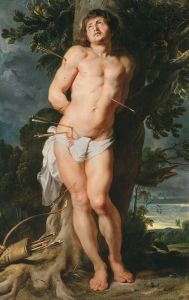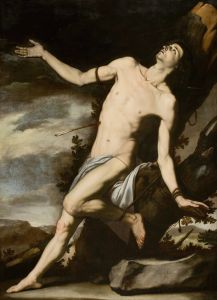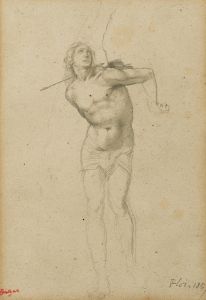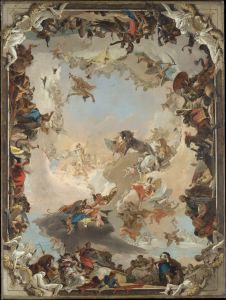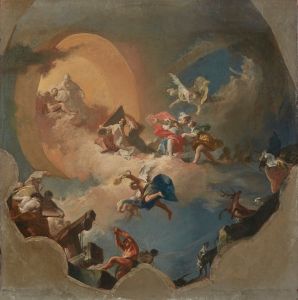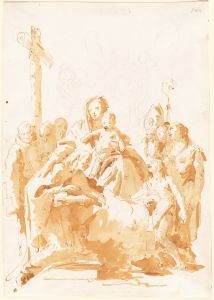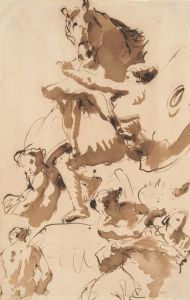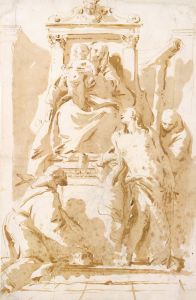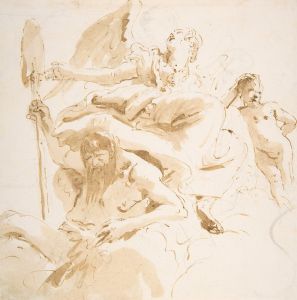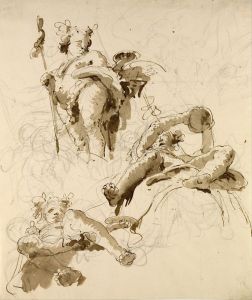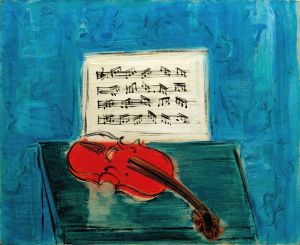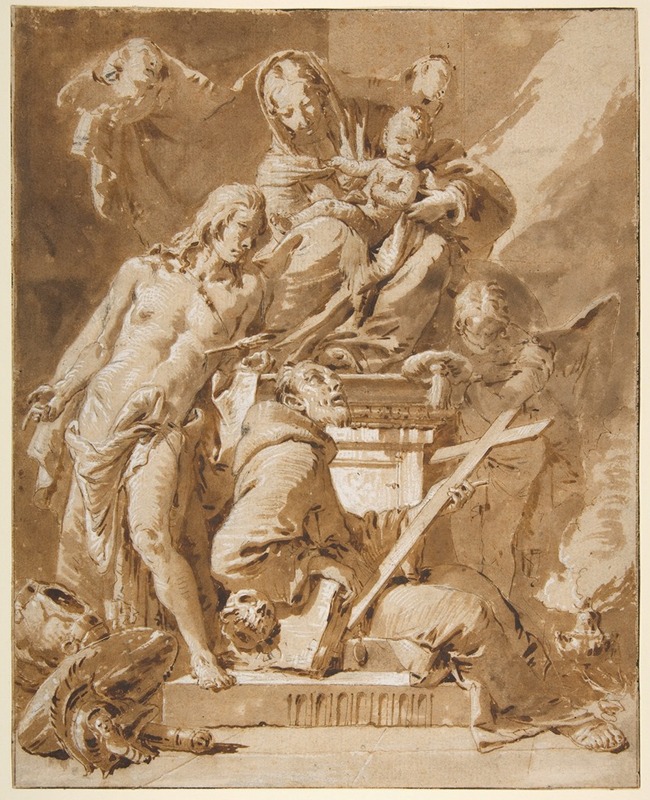
The Virgin and Child Enthroned with Saint Sebastian and a Franciscan Saint
A hand-painted replica of Giovanni Battista Tiepolo’s masterpiece The Virgin and Child Enthroned with Saint Sebastian and a Franciscan Saint, meticulously crafted by professional artists to capture the true essence of the original. Each piece is created with museum-quality canvas and rare mineral pigments, carefully painted by experienced artists with delicate brushstrokes and rich, layered colors to perfectly recreate the texture of the original artwork. Unlike machine-printed reproductions, this hand-painted version brings the painting to life, infused with the artist’s emotions and skill in every stroke. Whether for personal collection or home decoration, it instantly elevates the artistic atmosphere of any space.
Giovanni Battista Tiepolo's The Virgin and Child Enthroned with Saint Sebastian and a Franciscan Saint is a religious painting created by the renowned Venetian artist during the 18th century. Tiepolo, celebrated for his mastery of the Rococo style and his ability to convey dramatic narratives through light, color, and composition, was one of the most influential painters of his time. This particular work exemplifies his skill in religious imagery, a genre that formed a significant part of his artistic output.
The painting depicts the Virgin Mary seated on a throne, holding the Christ Child, a common motif in Christian art symbolizing her role as the Mother of God. To her side stands Saint Sebastian, identifiable by the arrows that are traditionally associated with his martyrdom. Saint Sebastian, a Roman soldier who was executed for his Christian faith, was often invoked as a protector against plagues. The inclusion of a Franciscan saint, whose identity is not definitively established, reflects the influence of the Franciscan order, which was prominent in Venice and other parts of Italy during Tiepolo's lifetime. The Franciscan saint is depicted in the characteristic brown habit of the order, emphasizing humility and devotion.
Tiepolo's use of light and color in this painting is characteristic of his style, with a luminous palette that enhances the spiritual atmosphere of the scene. The figures are arranged in a harmonious composition, with the Virgin and Child occupying the central, elevated position, drawing the viewer's attention. The gestures and expressions of the figures convey a sense of reverence and divine grace, hallmarks of Tiepolo's religious works.
The exact date of the painting's creation is not definitively recorded, but it is consistent with Tiepolo's mature period, during which he produced numerous altarpieces and frescoes for churches and private patrons. The work reflects the broader artistic trends of the Rococo period, including its emphasis on elegance, movement, and the interplay of light and shadow.
The current location of The Virgin and Child Enthroned with Saint Sebastian and a Franciscan Saint is not widely documented in public records, and further details about its provenance or commission are not readily available. However, it remains an example of Tiepolo's ability to blend religious devotion with artistic innovation, making it a valuable piece within the context of 18th-century Venetian art.






